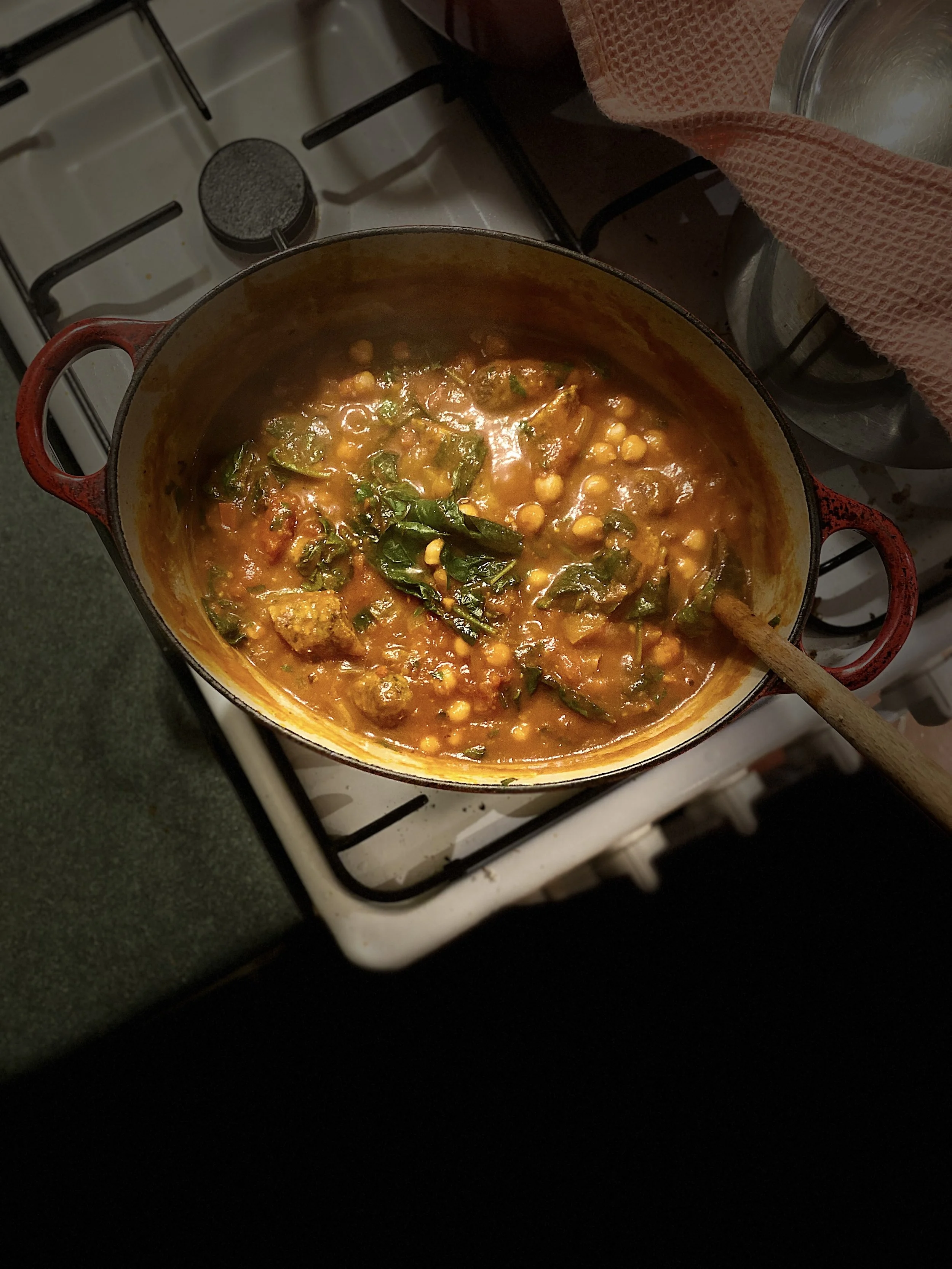Healthy? No way, unless the presence of chia seeds cancels everything else out (I don’t think it does, sorry!)
Incredible? YES.
Worth making to treat your fabulous self? HELL YES.
These were a road-test for the family Christmas and needless to say, they will be making an appearance! If you’re making this for gluten-free loved ones, simply sub the flour for a GF plain flour (or buckwheat flour) and the Oreos for a GF alternative.
Incredible vegan oreo brownies
2 tablespoons chia seeds
110g coconut oil, melted
240g dark brown sugar
80ml maple syrup
3 tablespoons almond butter (or peanut butter)
60g cocoa powder
85g plain flour
1 teaspoon vanilla extract
1/2 teaspoon sea salt
1/4 teaspoon apple cider vinegar
1/2 teaspoon bicarb soda
10 Oreos (check the pack if you’re making this for vegans - the Oreos you can buy in Australia are vegan but that might not be the case everywhere), snapped into pieces
Roughly 12 squares of dark chocolate (I used Green & Black’s 85%)
Preheat the oven to 180 C (fan). Grease and line a 20cm square baking tin, making sure the paper comes up the sides and there’s a bit of overhang, so the brownie will come out easily.
Combine the chia seeds with 6 tablespoons of water in a small bowl and set aside to thicken, which will take about 15 minutes. It might look gross - mine looked like a film of mould had formed on a bowl of water, hair and mouse droppings - but don’t despair, I promise, everything is going to be wonderful. You can get on with the next step while the chia magic happens!
Whisk together the melted coconut oil, brown sugar, maple syrup and almond butter (I used my Kitchen Aid with the balloon whisk) until you have formed what looks like a thick caramel sauce.
Sieve in the cocoa powder and whisk again until the batter is shiny and smooth looking.
Add in the chia gloop - you should end up with about 6 tablespoons of it, roughly. Again, whisk until shiny and well incorporated.
Then gradually fold in the (sifted) flour, baking powder, bicarb soda and salt until incorporated.
Finally whisk in the vanilla extract and apple cider vinegar.
Now you have your batter. In future, I may double the ingredients up to this step of the process so I can leave the Oreos whole and cover them with batter. That sounds dangerous, doesn’t it?
But for now, break your 10 Oreo biscuits into pieces - either halves or threes, it doesn’t matter - over the bowl and fold them gently through the brownie batter.
Pour the batter into your prepared tin and dot with the pieces of dark chocolate. You could also use vegan chocolate buttons or melts.
Put in the oven and bake for 20-25 minutes. I pulled mine out at 24 minutes and they were pretty much perfect. But you know your oven! I used the oven function on my air fryer, which is a very reliable oven. If I were using the actual oven in my kitchen, which is gas, I would be checking them at 20 minutes as it runs a little hot.
Use a skewer to test for doneness - you don’t want raw batter sticking to the skewer, but a little is fine, that’s what you want because that means they’re still squidgy in the middle and will firm up as they cool. If the skewer comes out clean, they are probably overdone. Not inedible, they just won’t be fudgy and squidgy. So if you want squidgy brownies (who doesn’t?), set your timer for 20 minutes and check them after that until you’re happy, would be my advice.
Now, this is the crucial bit. You must leave them to completely cool in the tin. No cutting the brownies while they’re still hot, in the style of Homer Simpson.
Image from The Joy of Cooking Milhouse (a bloody awesome site!)
Leave them for at least an hour, but three or four is even better. If you stick a knife into the cooled brownies and it comes out clean, then they’re ready to devour.
Lift the brownie slab out of the pan, place on a board and cut into desired-size pieces. You should get 9 generous brownies out of this, and maybe 15 delicately-sized ones.
Next time I make these, I might leave out the maple syrup - the outer brownies are quite crusty, which indicates high sugar content. I wonder if leaving out the maple syrup would make a difference. But I’m not complaining, they’re pretty heavenly regardless!
Frankly, the only giveaway that this incredibly decadent brownie is vegan might be the occasional chia seed in the teeth. And it’s totally #worthit 😍









